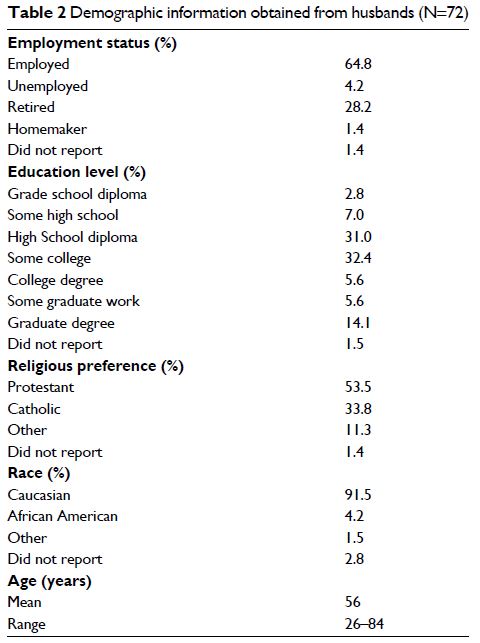108985
论文已发表
注册即可获取德孚的最新动态
IF 收录期刊
- 3.4 Breast Cancer (Dove Med Press)
- 3.2 Clin Epidemiol
- 2.6 Cancer Manag Res
- 2.9 Infect Drug Resist
- 3.7 Clin Interv Aging
- 5.1 Drug Des Dev Ther
- 3.1 Int J Chronic Obstr
- 6.6 Int J Nanomed
- 2.6 Int J Women's Health
- 2.9 Neuropsych Dis Treat
- 2.8 OncoTargets Ther
- 2.0 Patient Prefer Adher
- 2.2 Ther Clin Risk Manag
- 2.5 J Pain Res
- 3.0 Diabet Metab Synd Ob
- 3.2 Psychol Res Behav Ma
- 3.4 Nat Sci Sleep
- 1.8 Pharmgenomics Pers Med
- 2.0 Risk Manag Healthc Policy
- 4.1 J Inflamm Res
- 2.0 Int J Gen Med
- 3.4 J Hepatocell Carcinoma
- 3.0 J Asthma Allergy
- 2.2 Clin Cosmet Investig Dermatol
- 2.4 J Multidiscip Healthc

Husbands’ perceptions of their wives’ breast cancer coping efficacy: testing congruence models of adjustment
Authors Merluzzi TV, Martinez Sanchez M
Received 15 November 2017
Accepted for publication 27 December 2017
Published 12 February 2018 Volume 2018:10 Pages 297—304
DOI https://doi.org/10.2147/CMAR.S157124
Checked for plagiarism Yes
Review by Single-blind
Peer reviewers approved by Dr Colin Mak
Peer reviewer comments 2
Editor who approved publication: Dr Antonella D'Anneo
Introduction: Recent reviews have reinforced the notion that having a supportive
spouse can help with the process of coping with and adjusting to cancer.
Congruence between spouses’ perspectives has been proposed as one mechanism in
that process, yet alternative models of congruence have not been examined
closely. This study assessed alternative models of congruence in perceptions of
coping and their mediating effects on adjustment to breast cancer.
Methods: Seventy-two women in treatment for breast cancer and their
husbands completed measures of marital adjustment, self-efficacy for coping,
and adjustment to cancer. Karnofsky Performance Status was obtained from
medical records. Wives completed a measure of self-efficacy for coping (wives’
ratings of self-efficacy for coping [WSEC]) and husbands completed a measure of
self-efficacy for coping (husbands’ ratings of wives’ self-efficacy for coping
[HSEC]) based on their perceptions of their wives’ coping efficacy.
Results: Interestingly, the correlation between WSEC and HSEC was only 0.207;
thus, they are relatively independent perspectives. The following three models
were tested to determine the nature of the relationship between WSEC and HSEC:
discrepancy model (WSEC - HSEC), additive model
(WSEC + HSEC), and multiplicative model (WSEC × HSEC). The
discrepancy model was not related to wives’ adjustment; however, the additive (B =0.205, P <0.001) and multiplicative (B =0.001, P <0.001) models were
significantly related to wives’ adjustment. Also, the additive model mediated
the relationship between performance status and adjustment.
Discussion: Husbands’ perception of their wives’ coping efficacy contributed
marginally to their wives’ adjustment, and the combination of WSEC and HSEC
mediated the relationship between functional status and wives’ adjustment, thus
positively impacting wives’ adjustment to cancer. Future research is needed to
determine the quality of the differences between HSEC and WSEC in order to
develop interventions to optimize the impact of these two relatively
independent perspectives on cancer outcomes.
Keywords: couples, cancer, coping, adjustment, self-efficacy
